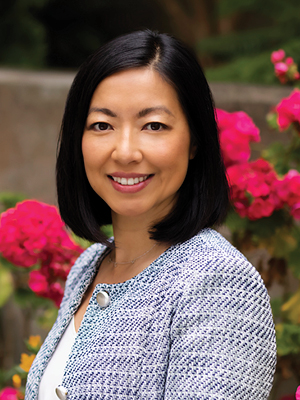Annual Research Conference 2024 Keynote Speech: Doris Wang, MD, PhD
 Doris Wang, MD, PhD, associate professor of Neurological Surgery at UCSF’s School of Medicine, will present the keynote address at this year’s annual Research Conference. In her talk, Advances in Surgery for Movement Disorders: Ablative and Adaptive Neuromodulation, Dr. Wang will discuss how she uses focused ultrasound, in collaboration with Leo Sugrue, MD, PhD of Neuroradiology, to treat tremor disorders, as well as her translational research in developing closed-loop deep brain stimulation (DBS) to treat gait disorders in Parkinson’s disease.
Doris Wang, MD, PhD, associate professor of Neurological Surgery at UCSF’s School of Medicine, will present the keynote address at this year’s annual Research Conference. In her talk, Advances in Surgery for Movement Disorders: Ablative and Adaptive Neuromodulation, Dr. Wang will discuss how she uses focused ultrasound, in collaboration with Leo Sugrue, MD, PhD of Neuroradiology, to treat tremor disorders, as well as her translational research in developing closed-loop deep brain stimulation (DBS) to treat gait disorders in Parkinson’s disease.
“The field of functional neurosurgery is fundamentally reliant on quality imaging to visualize deep areas of the brain,” Dr. Wang explains. The techniques that she uses to target the thalamic nucleus used in treating tremor patients with DBS and focused ultrasound were developed with Melanie Morrison, PhD, and Sugrue. Wang emphasizes the value of advanced image targeting, “My clinical practice relies on working very closely with my colleagues in radiology to get the best images possible.”
Dr. Wang will also present her research on developing adaptive DBS techniques to treat gait disorders in Parkinson’s patients. Current DBS relies on open-loop, continuous stimulation that does not adapt to patients’ movement states. Wang uses implanted electrodes to identify biomarkers of walking, so that the DBS can automatically adjust stimulation settings based on an individual natural walking pattern. “The neurophysiology that underlies human gait is poorly understood until now,” Dr. Wang says, “We can now harness what we learn from brain dynamics of natural walking to create novel therapies that will hopefully improve gait functions in Parkinson’s patients.”
Dr. Wang is very excited for the opportunity to present these advances in movement disorders surgery to imaging scientists, “Advances in neuroimaging and neurophysiology will not only allow us to discover more about human brain circuit functions, but will lead to improved treatments for neurological disease.”
